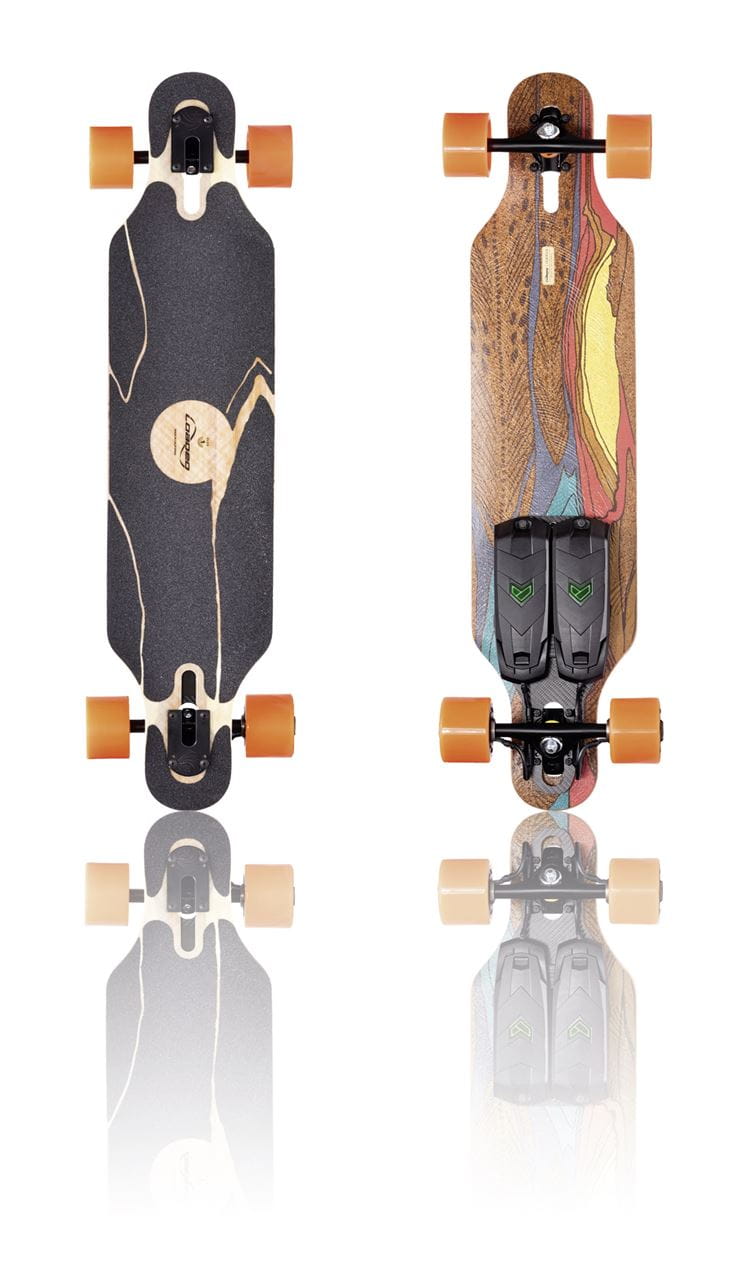Unlimited’s Electric Skateboard powertrain employs Nordic’s nRF52832 SoC to enable wireless motor control by handheld remote
Nordic Semiconductor today announces that Unlimited, a Barcelona, Spain-based recreational technology developer, is employing Nordic’s nRF52832 Bluetooth® Low Energy (Bluetooth LE) System-on-Chip (SoC) to provide the wireless connectivity for its ‘Unlimited Electric Skateboard’ powertrain.
Each Unlimited modular powertrain comprises a set of components tailored to the user’s requirements for power, range, weight, and budget, and is easily installed to virtually any standard skateboard to make it electric. Users can choose between three different kits: the ‘Solo kit’ featuring one battery and one motor for 12km range, 10 percent grade for hills, and 38km/h top speed; the ‘Cruiser kit’ featuring two batteries and one motor for 24km range, 10 percent grade for hills, and 38km/h top speed; and the ‘R kit’ featuring two batteries and two motors for 24km range, 20 percent grade for hills, and 42km/h top speed. For 2019, Unlimited has partnered with Loaded Boards and Orangatang Wheels, two leading brands in the skateboard market, from Los Angeles, California. All powertrains now include a full set of Orangatang wheels and users also have the option of purchasing a fully assembled board with a Loaded deck.
Any skateboard fitted with the modular powertrain can be wirelessly controlled over Bluetooth LE using the included handheld remote controller featuring a throttle to accelerate and brake, an OLED screen displaying key information like speed, battery level, and riding mode, and buttons for navigating the menu and using other features such as cruise control and ‘nitro’ power boosts.
The Unlimited Electric Skateboard powertrain and the remote controller integrate Raytac’s ‘MDBT42Q’ Bluetooth LE module—employing Nordic’s nRF52832 SoC—with on-chip antenna to provide robust wireless connectivity between remote controller, powertrain, and the user’s paired Bluetooth 4.0 (and later) smartphone. In addition to supervising the remote controller’s wireless connectivity, the Nordic SoC’s 64MHz, 32-bit Arm® Cortex® M4F processor powers the rest of the device’s functionality.
Nordic’s easy-to-use software development kit (SDK) examples, was the key to validating the solution quickly
Nicolas Veloz, Unlimited
The powertrain provides three default riding modes (Easy, Eco, and Pro) and one ‘user’ mode that can be customized from the iOS- and Android-compatible Rideunlimited app on the user’s smartphone. The partner app also allows users to make over-the-air device firmware updates (OTA-DFU) to the electronic components in the powertrain via the Nordic-powered Bluetooth LE connectivity.
Nordic’s nRF52832 multiprotocol SoC combines the Arm processor with a 2.4GHz multiprotocol radio (supporting Bluetooth 5, ANT™, and proprietary 2.4GHz RF protocol software) featuring -96-dB RX sensitivity. The nRF52832 is supplied with Nordic’s S132 SoftDevice, a Bluetooth 5-certifed RF software protocol stack for building advanced Bluetooth LE applications.
Nordic’s unique software architecture provides a clear separation between the RF protocol software (the SoftDevice) and Unlimited’s application code, simplifying the development and testing process and ensuring the SoftDevice doesn’t become corrupted when developing, compiling, testing, and verifying application code. The S132 SoftDevice features Central, Peripheral, Broadcaster and Observer Bluetooth LE roles, supports up to twenty connections, and enables concurrent role operation.
“We selected Nordic’s nRF52832 SoC based largely on hardware requirements as we needed a strong, robust Bluetooth LE link for safety reasons and to provide the optimal user experience,” says Juan Pablo Viera, Co-founder and CTO of Unlimited.
Nicolas Veloz, Firmware Leader at Unlimited, adds: “The ability to use any IDE (integrated development environment) and the ARM processor to compile the code and test it, along with Nordic’s easy-to-use software development kit (SDK) examples, was the key to validating the solution quickly. The SDK was most useful for the implementation of our own SPI (Serial Peripheral Interface) communication protocol.
“The technical information and documentation provided by Nordic also proved invaluable.”

